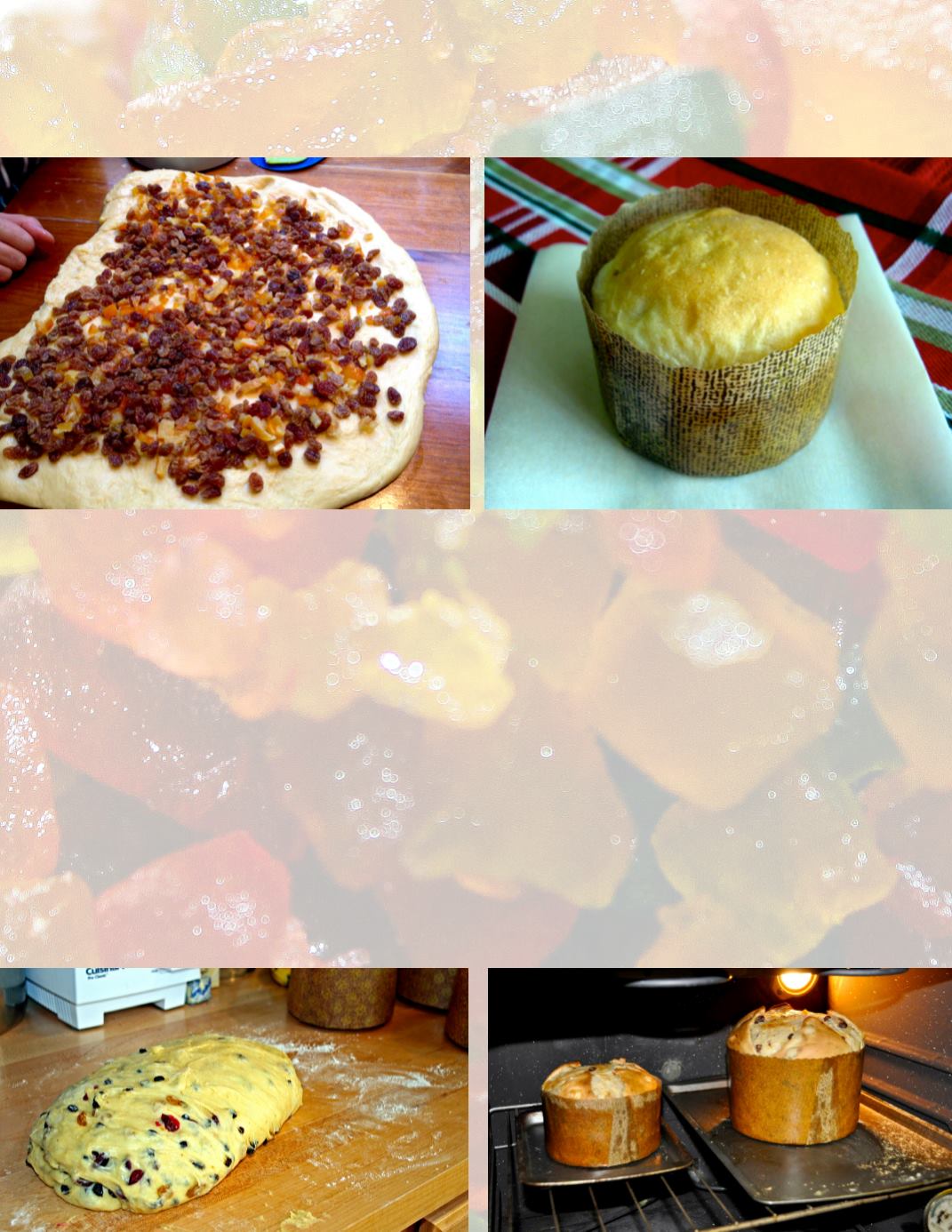

Il Panettone Milanese (Milanese Panettone)
Milano’s Panettone! Never made a panettone? To
begin, some words of advice, which will be obvious if
you have already made a panettone, but will help if it’s
your first time:
Work the dough, if possible, with a dough mixer of the
kind also used for making bread dough. Beating times
with a mixer are on the order of 20 minutes, whereas
hand-beating will require about 50.
The room where the panettone is made must be
warm, about 72 degrees F (22 C). The flour should
also be warm, about 68 F (20 C); what’s generally
used is 00 grade (very fine all-purpose flour) and ex-
tremely dry. If it has been wet where you are, you may
want to dry your flour in an oven, as it absorbs mois-
ture unless it is tightly sealed. The water used should
be warm, about 76 F (24 C).
Don’t forget a pinch of salt, because it stimulates
rising.
Commercial bakers use a sour dough starter (i.e. wild
yeast). Home recipes generally call for baker’s yeast.
The baking time will depend upon the size of the pa-
nettone. Assuming an oven temperature of 400 F (200
C), half an hour will be sufficient for small to medi-
um-sized panettoni, whereas larger ones will require
considerably more. Home ovens are best suited to
small-medium-sized panettoni.
If you want the surface of the panettone to be shiny,
slip a bowl of water into the oven when the panettone
is half-baked to raise the humidity.
Commercially sold panettoni are taller than they are
broad. To obtain this effect at home, you’ll have to
put a ring of heavily buttered thick paper around the
dough when you put it in the oven, or use a panettone
mold. If you instead want a panettone that’s wider
than it is high, like a normal bread loaf, simply put the
dough in the oven. If you choose this course, you will
want to put the dough on a pizza stone or similar.
Having said all this, here we go.














